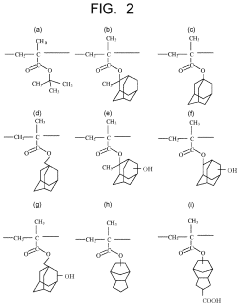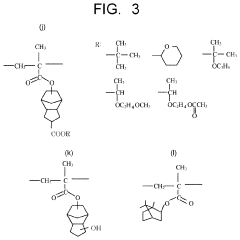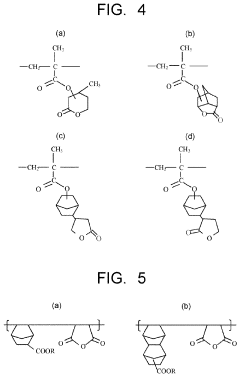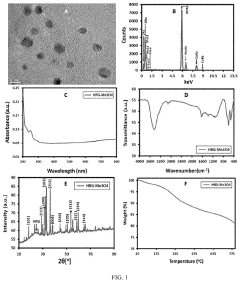How to Enhance Photosensitivity with Graphene Oxide?
Graphene Oxide Photosensitivity Background
Graphene oxide (GO) has emerged as a promising material in the field of photosensitivity enhancement due to its unique structural and electronic properties. The journey of GO in this domain began with the discovery of graphene in 2004, which sparked intense research into its derivatives. GO, a two-dimensional carbon nanomaterial, is produced by the oxidation of graphite, resulting in a structure with oxygen-containing functional groups on its basal planes and edges.
The evolution of GO's application in photosensitivity has been driven by the increasing demand for high-performance optoelectronic devices in various sectors, including solar cells, photodetectors, and imaging systems. The ability to tune GO's optical and electronic properties through chemical modification has made it an attractive candidate for enhancing light sensitivity in these applications.
One of the key milestones in GO's development for photosensitivity was the realization that its bandgap could be engineered by controlling the degree of oxidation. This discovery opened up new possibilities for tailoring GO's optical absorption and charge carrier dynamics, crucial factors in photosensitive applications.
The integration of GO into existing photosensitive materials and devices has been a significant trend in recent years. Researchers have explored various approaches, such as incorporating GO into composite materials, using it as an interfacial layer in solar cells, or developing GO-based photodetectors. These efforts have aimed to leverage GO's high carrier mobility, large surface area, and tunable optoelectronic properties.
Another important aspect of GO's evolution in photosensitivity enhancement has been the development of reduction techniques. Reduced graphene oxide (rGO) offers improved electrical conductivity while retaining some of the advantageous properties of GO, making it particularly suitable for certain photosensitive applications.
The current technological landscape sees GO being investigated for its potential to overcome limitations in traditional photosensitive materials. Its ability to enhance light absorption, improve charge separation and transport, and increase the overall efficiency of photosensitive devices has positioned GO as a key material in next-generation optoelectronic technologies.
As research continues, the focus is shifting towards optimizing GO's properties for specific applications, developing scalable production methods, and addressing challenges such as long-term stability and environmental impact. The ongoing exploration of GO's potential in photosensitivity enhancement reflects the broader trend of nanomaterial integration in advanced electronic and optical systems, promising significant advancements in the field of photonics and optoelectronics.
Market Demand Analysis
The market demand for enhanced photosensitivity using graphene oxide has been steadily growing across various industries. This surge in interest is primarily driven by the unique properties of graphene oxide, which offer significant advantages in photosensitive applications. The optoelectronic sector, in particular, has shown a keen interest in leveraging graphene oxide to improve the performance of photodetectors, solar cells, and other light-sensitive devices.
In the field of photodetectors, there is a growing need for materials that can offer higher sensitivity, faster response times, and broader spectral range. Graphene oxide-based photodetectors have demonstrated remarkable potential in meeting these requirements, especially in the near-infrared and terahertz regions. This has led to increased research and development activities in aerospace, defense, and telecommunications industries, where high-performance photodetectors are crucial.
The solar energy sector represents another significant market for graphene oxide-enhanced photosensitivity. As the global push for renewable energy intensifies, there is a constant demand for more efficient solar cells. Graphene oxide's ability to improve light absorption and charge carrier transport in photovoltaic devices has attracted considerable attention from solar panel manufacturers and energy companies.
Biomedical imaging is emerging as a promising application area for graphene oxide-based photosensitive materials. The healthcare industry is showing increasing interest in developing more sensitive and precise imaging techniques for early disease detection and monitoring. Graphene oxide's biocompatibility and tunable optical properties make it an attractive candidate for enhancing contrast agents and fluorescent probes used in medical imaging.
The consumer electronics market is also driving demand for improved photosensitivity. Smartphone manufacturers are continuously seeking ways to enhance camera performance in low-light conditions. Graphene oxide's potential to boost light sensitivity in image sensors has not gone unnoticed in this highly competitive market.
Environmental monitoring and sensing applications represent another growing market segment. There is an increasing need for sensitive and reliable sensors to detect pollutants, monitor air and water quality, and measure various environmental parameters. Graphene oxide-based sensors with enhanced photosensitivity offer promising solutions for these applications.
While the market potential for graphene oxide in photosensitive applications is significant, it is important to note that the technology is still in its early stages of commercialization. Many applications are currently in the research and development phase, with a growing number of startups and established companies investing in this technology. As manufacturing processes improve and costs decrease, the market is expected to expand rapidly in the coming years.
Current Challenges
Despite the promising potential of graphene oxide (GO) in enhancing photosensitivity, several significant challenges currently hinder its widespread application and optimal performance. These challenges span across multiple aspects of GO's properties, synthesis, and integration into photosensitive devices.
One of the primary obstacles is the inconsistent quality and properties of GO produced through various synthesis methods. The oxidation process can lead to structural defects and variations in the oxygen-containing functional groups, resulting in unpredictable and non-uniform photosensitive behavior. This variability makes it difficult to achieve reproducible results and standardize GO-based photosensitive devices.
Another challenge lies in controlling the reduction level of GO, which directly affects its electronic and optical properties. While reduced graphene oxide (rGO) exhibits enhanced conductivity, it often comes at the cost of decreased photosensitivity. Striking the right balance between conductivity and photosensitivity remains a complex task, requiring precise control over the reduction process.
The integration of GO into existing photosensitive device architectures presents additional hurdles. Compatibility issues with other materials, such as electrodes and active layers, can arise due to GO's unique surface chemistry. This can lead to poor interfacial contact and reduced device performance. Moreover, ensuring uniform dispersion and preventing aggregation of GO sheets within the device structure is crucial for maximizing photosensitivity but remains challenging to achieve consistently.
Stability and long-term performance of GO-based photosensitive devices pose another significant concern. GO's tendency to undergo further reduction or oxidation over time can lead to changes in its electronic and optical properties, potentially compromising device stability and reliability. Developing effective encapsulation techniques to protect GO from environmental factors without sacrificing its photosensitive properties is an ongoing challenge.
The scalability of GO production and device fabrication processes also presents obstacles to commercial viability. Current methods for producing high-quality GO are often limited in scale and can be environmentally unfriendly. Translating laboratory-scale successes to industrial-scale production while maintaining consistent quality and performance is a major hurdle that needs to be overcome.
Lastly, the fundamental understanding of the photosensitivity mechanisms in GO is still evolving. The complex interplay between GO's structure, functional groups, and light interaction is not fully elucidated, making it challenging to design optimal GO-based photosensitive materials and devices. Further research is needed to unravel these mechanisms and guide the development of more efficient and tailored GO-based photosensitive solutions.
Existing GO Solutions
01 Photosensitive properties of graphene oxide
Graphene oxide exhibits photosensitive properties, making it suitable for various applications in optoelectronics and sensing. The material's sensitivity to light can be tuned by controlling its oxidation level and structure, allowing for the development of highly responsive photodetectors and sensors.- Photosensitive properties of graphene oxide: Graphene oxide exhibits photosensitive properties, making it suitable for various applications in optoelectronics and sensors. The material's sensitivity to light can be tuned by controlling its oxidation level and structure, allowing for the development of highly responsive photodetectors and light-sensitive devices.
- Graphene oxide-based photodetectors: Photodetectors utilizing graphene oxide as the active material have been developed, showcasing high sensitivity and fast response times. These devices can detect a wide range of light wavelengths, from ultraviolet to infrared, making them suitable for various sensing applications in fields such as environmental monitoring and medical diagnostics.
- Modification of graphene oxide for enhanced photosensitivity: Various methods have been developed to modify graphene oxide and enhance its photosensitivity. These include doping with metal nanoparticles, functionalization with organic molecules, and creating hybrid structures with other materials. Such modifications can improve light absorption, charge separation, and overall device performance.
- Graphene oxide in photovoltaic applications: The photosensitive properties of graphene oxide have been exploited in the development of solar cells and other photovoltaic devices. Graphene oxide can be used as an electron transport layer, hole transport layer, or active material in these devices, potentially improving their efficiency and stability.
- Light-induced reduction of graphene oxide: Exposure to light can induce the reduction of graphene oxide, leading to changes in its electrical and optical properties. This phenomenon has been utilized in the development of photopatterning techniques, allowing for the creation of conductive patterns on graphene oxide films without the need for additional chemical treatments.
02 Graphene oxide-based photodetectors
Graphene oxide can be used to fabricate high-performance photodetectors with broad spectral response and fast response times. These devices can be utilized in various applications, including imaging, optical communication, and environmental monitoring. The unique electronic properties of graphene oxide contribute to its excellent photosensitivity and detection capabilities.Expand Specific Solutions03 Functionalization of graphene oxide for enhanced photosensitivity
The photosensitivity of graphene oxide can be further improved through functionalization with various materials or molecules. This process can involve doping, surface modification, or the creation of hybrid structures, resulting in enhanced light absorption, charge separation, and overall photosensitive performance.Expand Specific Solutions04 Graphene oxide in photovoltaic applications
The photosensitive properties of graphene oxide make it a promising material for use in solar cells and other photovoltaic devices. It can be incorporated as an active layer, electron transport layer, or hole transport layer, improving the efficiency and stability of these devices.Expand Specific Solutions05 Light-induced reduction of graphene oxide
Graphene oxide can undergo photoreduction when exposed to light, resulting in the partial restoration of its sp2 carbon network. This process can be used to create patterns or selectively modify the properties of graphene oxide films, enabling the development of novel optoelectronic devices and sensors.Expand Specific Solutions
Key Industry Players
The field of enhancing photosensitivity with graphene oxide is in a rapidly evolving stage, characterized by intense research and development activities. The market for this technology is expanding, driven by applications in optoelectronics, sensors, and energy harvesting. While the technology is still maturing, significant progress has been made by key players. Universities like Nanyang Technological University and King Saud University are at the forefront of academic research, while companies such as LG Electronics and Toshiba Corp. are leading industrial applications. The involvement of diverse institutions, from the Technical Institute of Physics & Chemistry CAS to Northwestern University, indicates a global effort to advance this technology, with potential for breakthrough innovations in the near future.
Jiangnan University
Nanyang Technological University
Core GO Innovations
- A photosensitive composition comprising a resin without aromatic rings, such as polyacrylic acid or cycloolefin-maleic anhydride copolymer, combined with a photo acid generator having a naphthalene or benzene ring with a bulky group to prevent π-π stacking, allowing for effective patterning and complete removal without contaminating the graphene.
- Hybrid nanoparticles comprising manganese oxide and highly reduced graphene oxide (HRG-Mn3O4) are synthesized for use in photodynamic therapy and MRI imaging, offering a nontoxic and biocompatible solution for cancer treatment and diagnosis by activating photosensitizers at specific wavelengths and enhancing magnetic resonance signals.
Material Characterization
Material characterization plays a crucial role in understanding and enhancing the photosensitivity of graphene oxide (GO). The unique properties of GO, including its large surface area, excellent electrical conductivity, and tunable bandgap, make it an ideal candidate for photosensitive applications. To fully exploit these properties, a comprehensive characterization of GO materials is essential.
X-ray diffraction (XRD) analysis is commonly employed to investigate the crystal structure and interlayer spacing of GO. This technique provides valuable information about the degree of oxidation and the presence of functional groups on the GO surface. The characteristic peak of GO typically appears at around 2θ = 10-12°, indicating an increased interlayer spacing compared to pristine graphene.
Raman spectroscopy is another powerful tool for characterizing GO materials. The G band (~1580 cm^-1) and D band (~1350 cm^-1) are of particular interest, as their intensity ratio (I_D/I_G) provides insights into the degree of disorder and defects in the GO structure. A higher I_D/I_G ratio generally indicates a greater degree of functionalization, which can influence the material's photosensitivity.
Scanning electron microscopy (SEM) and transmission electron microscopy (TEM) are essential for visualizing the morphology and structure of GO sheets. These techniques allow researchers to observe the size, thickness, and distribution of GO flakes, as well as any structural defects or wrinkles that may affect photosensitivity. High-resolution TEM can also reveal the atomic structure of GO and any modifications made to enhance its photosensitive properties.
X-ray photoelectron spectroscopy (XPS) is invaluable for determining the chemical composition and bonding states of GO. This technique can quantify the relative amounts of carbon, oxygen, and other elements present in the material, as well as identify specific functional groups such as hydroxyl, epoxy, and carboxyl groups. Understanding the surface chemistry of GO is crucial for tailoring its photosensitive properties.
Atomic force microscopy (AFM) provides detailed information about the thickness and surface topography of GO sheets. This technique is particularly useful for characterizing single-layer or few-layer GO samples, allowing researchers to correlate thickness with photosensitivity and other properties.
UV-visible spectroscopy is employed to study the optical properties of GO, including its absorption spectrum and bandgap. The characteristic absorption peak of GO typically appears around 230-270 nm, with a shoulder at 300-350 nm. Monitoring changes in these spectral features can provide insights into modifications that enhance photosensitivity.
Fourier-transform infrared spectroscopy (FTIR) is used to identify and characterize the functional groups present on the GO surface. This technique is particularly useful for tracking changes in oxygen-containing groups during reduction or functionalization processes aimed at improving photosensitivity.
By combining these characterization techniques, researchers can gain a comprehensive understanding of GO materials and their photosensitive properties. This knowledge is essential for developing strategies to enhance photosensitivity, such as controlled reduction, doping, or functionalization of GO. The insights gained from material characterization guide the design of more efficient GO-based photosensitive devices and applications.
Environmental Impact
The environmental impact of enhancing photosensitivity with graphene oxide is a critical consideration in the development and application of this technology. Graphene oxide, a derivative of graphene, has shown promising potential in improving the photosensitivity of various devices and materials. However, its widespread use raises important questions about its ecological footprint and long-term environmental consequences.
One of the primary environmental concerns associated with graphene oxide is its production process. The synthesis of graphene oxide typically involves the oxidation of graphite using strong oxidizing agents, which can generate hazardous waste and potentially harmful byproducts. These chemical processes may contribute to air and water pollution if not properly managed. As research progresses, there is a growing emphasis on developing more environmentally friendly production methods to mitigate these impacts.
The disposal and potential release of graphene oxide into the environment also warrant careful examination. While graphene oxide is generally considered to have low toxicity, its nanoscale size and unique properties raise questions about its potential interactions with ecosystems. Studies have shown that graphene oxide can accumulate in aquatic environments and potentially affect marine organisms. Further research is needed to fully understand the long-term effects of graphene oxide on various ecosystems and food chains.
On the positive side, enhancing photosensitivity with graphene oxide has the potential to contribute to more efficient and sustainable technologies. Improved photosensitivity can lead to advancements in solar energy harvesting, reducing reliance on fossil fuels and decreasing carbon emissions. Additionally, enhanced photosensitivity in imaging and sensing applications could lead to more accurate environmental monitoring and early detection of pollutants, ultimately benefiting ecosystem health.
The use of graphene oxide in photosensitive devices may also contribute to the miniaturization and increased efficiency of electronic components. This could result in reduced material consumption and energy usage in the production and operation of various technologies, potentially offsetting some of the environmental impacts associated with its production.
As research in this field progresses, it is crucial to adopt a lifecycle approach to assess the environmental impact of graphene oxide-enhanced photosensitivity. This includes considering the entire process from raw material extraction to end-of-life disposal. Developing sustainable production methods, implementing proper waste management protocols, and exploring recycling options for graphene oxide-containing devices will be essential in minimizing the environmental footprint of this technology.







